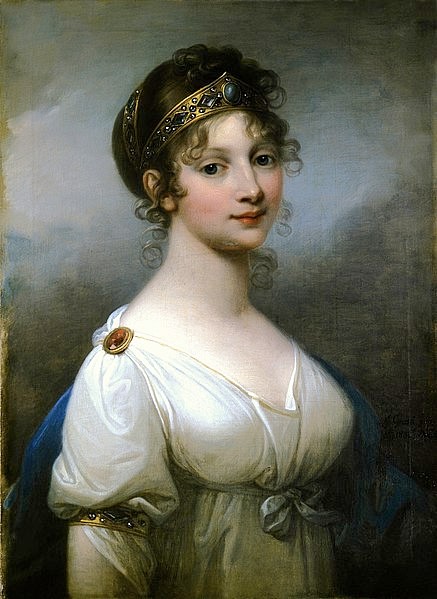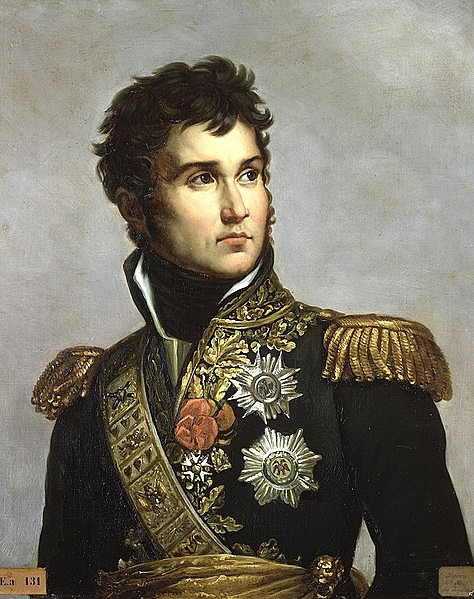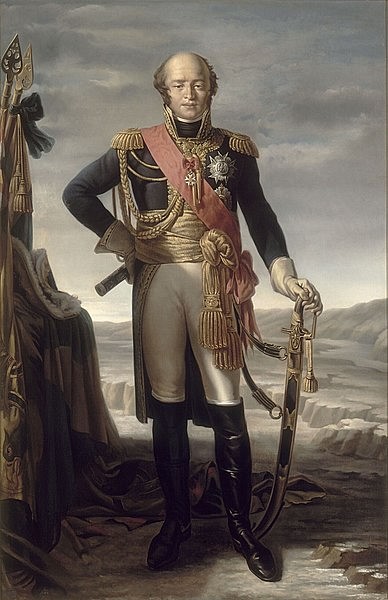The twin battles of Jena and Auerstedt, both fought on 14 October 1806, marked a major turning point in the Napoleonic Wars (1803-1815). It saw the French Grande Armée, led by Emperor Napoleon I (r. 1804-1814; 1815) soundly defeat the Prussian army of King Frederick William III (r. 1797-1840). The battles resulted in Prussia's subjugation to the First French Empire.
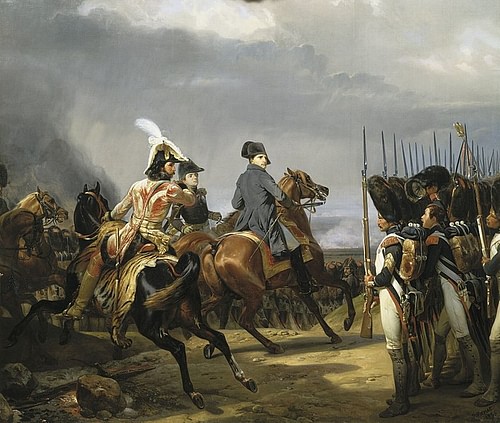
Background: Prussia Goes to War
The Kingdom of Prussia had been one of the first nations to go to war with France in 1792, at the start of the French Revolutionary Wars. Indeed, the initial invasion of France by the First Coalition had been spearheaded by Prussian troops under Charles William Ferdinand, Duke of Brunswick (1735-1806). Prussia was never too enthusiastic about the war, which it had only joined out of an obligation to its ally of Austria. At the time, Prussia was much more interested in the ongoing partitions of Poland than the war with France. After Brunswick's march on Paris was halted by a ragged French army at the Battle of Valmy (20 September 1792), Prussia maintained a rather half-hearted participation in the war effort until April 1795, when it made peace with France and exited the war entirely.
For the next eleven years, Prussia remained neutral even as the Revolutionary and Napoleonic Wars raged around it. Though Prussia often opposed the belligerent actions of France, the indecisive nature of King Frederick William III meant that Prussia never committed to an alliance. Prussia came close to throwing its lot in with the Third Coalition (1805-1806) but ultimately decided to remain out of the war once the French offered to cede over Hanover in return for Prussian neutrality. Still, a war party had formed in Berlin, centered around Queen Louise of Prussia (l. 1776-1810). Understanding the threat that Napoleon's empire posed to Prussian interests in Central Europe, Queen Louise and her supporters finally convinced Frederick William to mobilize the army and promise military aid to Tsar Alexander I of Russia. This could have turned the tide of the war, but before Prussian mobilization was complete, Napoleon shattered an Austro-Russian army at the Battle of Austerlitz (2 December 1805), knocking Austria out of the conflict and bringing the War of the Third Coalition to an end.
The end of the war dramatically altered the balance of power in Central Europe. The triumphant Napoleon established the Confederation of the Rhine, a collection of German states under French protection that included Bavaria, Württemberg, and Baden, among others. The member states of the Confederation were obliged not only to provide troops for Napoleon's armies but also to exit the Holy Roman Empire; this directly led to the empire's dissolution in July 1806. This enraged Prussia, whose position in Germany was now challenged by France. The Prussians were further humiliated when it was discovered that Napoleon had offered to give Hanover to King George III of Great Britain, despite the promises he had made to Berlin. These, and several other grievances, caused Queen Louise's war faction to grow ever stronger, as members of the Prussian Noble Guard sharpened their sabers on the steps of the French Embassy in Berlin. In August 1806, King Frederick William of Prussia finally decided to go to war and once again began mobilizing his army.
The Opposing Armies
Despite having had eleven years of peace to prepare for a conflict, Prussia was not ready for war. The Prussian army was no longer the military machine that it had been in the days of Frederick the Great and now suffered from several deficiencies. The most glaring problem was one of leadership. The Prussian high command was full of aging generals who clung to the outdated military techniques of their glory days; the Duke of Brunswick, commander-in-chief of the Prussian army, was 71 and had begun his career in the Seven Years' War (1756-1763), while the senior royal advisor, Wichard von Möllendorf, was even older at 82.
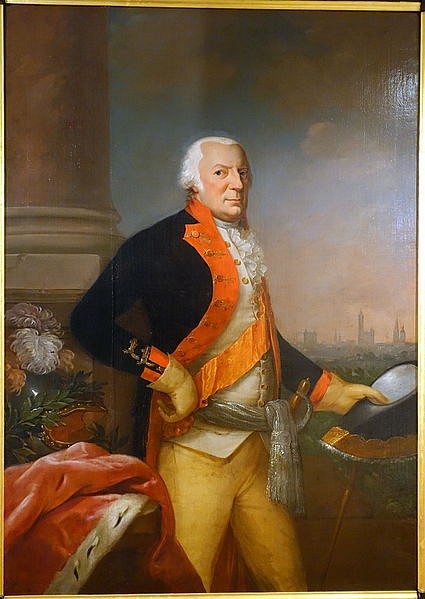
Historian David G. Chandler notes that this problem could have been overcome if Prussia possessed "even a rudimentary staff system" (455). However, the Prussian army had no such staff corps, and three officers shared the duties of chief of staff; these men were rivals and often contradicted one another, adding to the confusion. Though individual Prussian soldiers were well-disciplined and valiant, they relied on the rigid linear system of shoulder-to-shoulder drill more suited to the previous century. The army's mobility was slow, artillery was often poorly handled, and the Prussian muskets were among the worst in Europe.
By contrast, Napoleon's Grande Armée was perhaps the most modern and efficient fighting force in Europe. Tempered on the battlefields of Ulm and Austerlitz, it was comprised of hardened veterans and commanded by some of the most talented military officers of the era. The French infantry was, in the words of Chandler, "flexible, quick, and intelligent," the cavalry "imbued with a fierce courage," and the artillery gunners were "at the peak of their form" (453-54). The army had not returned to France following its recent victories but had instead wintered in Germany. As the Prussians were mobilizing, the Grande Armée was stationed along the River Main, consisting of eight corps of 160,000 troops (including Bavarians and other German allies) and 32,000 cavalry. The Grande Armée of 1806 was "probably the most integrated and best trained force that Napoleon ever commanded" (ibid).
Napoleon Invades Saxony
Under pressure from his wife, King Frederick William III sent an ultimatum to Napoleon, demanding the withdrawal of all French troops across the Rhine. When the French emperor failed to respond, Prussia formally declared war on 9 October 1806, beginning the War of the Fourth Coalition. The declaration of war was made hastily and recklessly; Frederick William had not consulted his ally, Tsar Alexander I of Russia, before issuing the declaration, meaning that no Russian soldiers were available to support Prussia. Though the Prussians drew military support from their German allies of Hesse and Saxony, they were, by and large, on their own. The Prussian army was divided into three forces: the main army of 65,000 men was led by the Duke of Brunswick, while a secondary Prussian-Saxon force of 45,000 was placed under the command of Frederick Louis, Prince of Hohenlohe-Ingelfingen. Command of the third army of 35,000 men was split between generals Ernst von Rüchel and Gebhard von Blücher, and this force was left to guard Westphalia and Hesse.
Since the Prussians had made it obvious that they were preparing for war, Napoleon was able to get into position before the official declaration. At dawn on 8 October, the Grande Armée crossed into Saxony, guided by light cavalry squadrons under the personal leadership of Marshal Joachim Murat. The rest of the army followed Murat's cavalry in a wedge shape, advancing in three columns; each French corps marched within easy supporting distance of its neighboring corps. The leftmost column was headed by the V Corps under Marshal Jean Lannes; as Lannes approached the town of Saalfeld, he was warned by Napoleon to expect a strong enemy force. Sure enough, when Lannes reached Saalfeld he encountered the advance guard of Hohenlohe's army, commanded by Prince Louis Ferdinand, nephew of the Prussian king.
Hoping to prevent the French from crossing the Saale River and interfering with the movements of the larger Prussian-Saxon army, Prince Louis decided to hold his ground, even though his 8,500 men were outnumbered by Lannes' Corps of nearly 13,000. On 10 October, the Battle of Saalfeld began when French General Louis-Gabriel Suchet's division came under heavy fire as it emerged from the woods. Bloody fighting raged throughout the morning until 1 p.m. when the French started to prevail. In a last-ditch attempt to turn the tide of battle, Prince Louis rallied his squadrons for a cavalry charge, but he was killed in hand-to-hand combat by Quartermaster Guindey of the French 10th Hussars. The loss of Prince Louis Ferdinand, as well as nearly 1,000 Prussian-Saxon casualties, was a massive blow to Prussian morale.
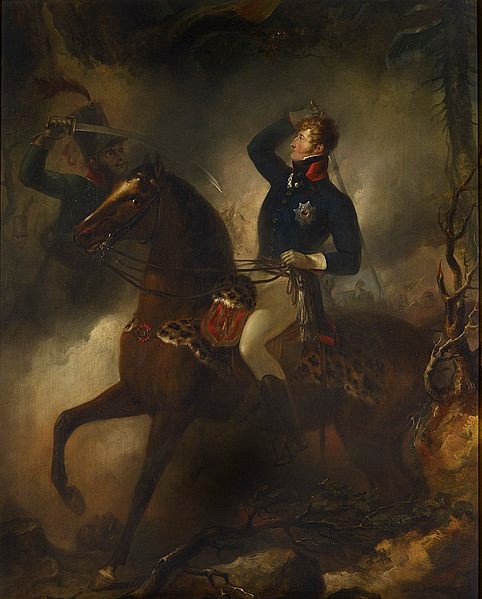
The Battle of Saalfeld shook the confidence of the Prussian commanders. As the beaten advance guard pulled back across the Saale, Prince Hohenlohe withdrew to the town of Jena. Brunswick, meanwhile, convened a war council in which it was decided to avoid an immediate battle with Napoleon and retreat to Leipzig. Brunswick ordered Hohenlohe to act as a rearguard at Jena until Brunswick's main army had retreated. But by the time these orders were sent out on the evening of 13 October, it was too late; the main part of Napoleon's army was marching toward Jena. Unaware that the Prussian army was split in two, Napoleon assumed Hohenlohe's force was the main Prussian army. Therefore, he sent the III Corps under Marshal Louis-Nicolas Davout and the I Corps under Marshal Jean Bernadotte 16 kilometers (10 mi) north to strike the Prussian rear.
Jena
At dawn on 14 October, amidst heavy morning fog, Marshal Lannes' V Corps moved into position on the grassy field of Jena. With not enough space for the whole army to deploy, Lannes' men were so heavily concentrated that "the breasts of the men of each regiment were practically touching the backs of those in front of them but the troops were so well disciplined that…there was not the least disorder" (Chandler, 480). Lannes' task was to push forward and to win enough ground so that Napoleon could deploy his full army of 96,000 men; Lannes' attack was to be supported by Marshal Charles-Pierre Augereau's VII Corps and Marshal Jean-de-Dieu Soult's IV Corps. At 6 a.m., Napoleon visited the units of Lannes' Corps, haranguing them. They were faced with Hohenlohe's 38,000 Prussians, who were still shaken from the defeat at Saalfeld. Many Prussian soldiers had already deserted, and those that remained were miserable and underfed.
The fighting began at 6:30 a.m., as General Suchet's division of Lannes' Corps engaged the Prussian advance guard under General Bogislav von Tauentzien near the village of Closwitz. Despite being battered by close-range Prussian artillery, Suchet struck Tauentzien near Closwitz, leading to confused and bloody fighting in the fog. With Suchet's division pinned down, Lannes urged the rest of his corps forward to the village of Vierzehnheiligen, which was defended by Tauentzien's Saxon reserves. Lannes quickly captured Vierzehnheiligen, but the village was soon lost again after a frenzied Prussian counterattack. However, this counterattack lost its momentum, as Hohenlohe sent in units piecemeal rather than ordering a larger attack. At 7:30, Napoleon joined Lannes, setting up a 25-gun battery to fire on the village.
At around 10 a.m., Soult's Corps moved in on the right and drove the Prussians out of Closwitz. This won enough ground for the entire French army to deploy. One of Soult's divisions, under General Saint-Hilaire, pressed forward to attack the Prussians near Rodigen. Saint-Hilaire encountered heavy resistance but was eventually able to break through and turn the Prussian left flank. Meanwhile, Augereau's Corps emerged from a ravine to attack the Prussian right flank to the east of Isserstedt.
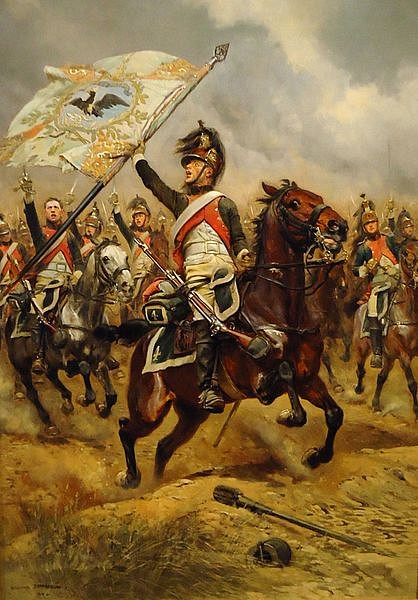
At this point, French Marshal Michel Ney arrived on the battlefield with his VI Corps of 4,000 men. Without waiting for orders, Ney plunged into the battle, charging straight for a strong Prussian battery on Lannes' left flank. Though the Prussian line collapsed against this surprise charge, Ney pushed the Prussians back too far; isolated from Lannes' Corps, Ney found himself surrounded by Prussian cavalry and had to form his infantry into squares to survive. Napoleon noticed he was in danger and sent in some of his own Imperial Guard cavalry to rescue him. This move weakened the French center, however, forcing Napoleon to move up the rest of his elite Imperial Guard to plug the gap.
At the same time, Napoleon ordered Lannes to push through Vierzehnheiligen to shore up Ney's isolated Corps. Pushing through the village, which was now engulfed in flames, Lannes' men encountered General Grawert's Prussian line. Both sides took heavy losses, but Lannes was repulsed and forced back into the burning village. This was the decisive moment; had Hohenlohe ordered Grawert into the village, he might have pushed Lannes back further. However, Hohenlohe was expecting the arrival of 15,000 reinforcements under General Rüchel and ordered Grawert to stay put. This was a blunder described by one historian as one of the most "pitiful moments in military history" (Chandler, 484). Rüchel did not arrive on time, leaving Grawert's men in a dangerously exposed position, where they were torn to shreds by French artillery.
By noon, Augereau had taken Isserstedt and Soult had secured the right flank. Realizing the time had come for a major push, Napoleon ordered all corps forward in thick skirmish lines with battalion columns behind. The Prussians steadily gave ground for an hour, though they finally broke under repeated charges by Murat's cavalry. By 2:30 p.m., Hohenlohe's entire army was fleeing in panicked retreat; riding whip in hand, Murat ruthlessly pursued them for 10 kilometers (6 mi), cutting down and capturing several thousand fleeing Prussians. It was at this moment that Rüchel finally arrived on the battlefield, only to be overwhelmed by French cannon fire. Before long, Rüchel's men were also in flight and were likewise mercilessly ridden down by Murat's cavalry. Murat did not call off his pursuit until he reached Weimar at 6 p.m.; his pursuit maximized Napoleon's victory by annihilating the remnants of Hohenlohe's army.
Battle of Auerstedt
Jena was not the only battle to be fought that day. Near Auerstedt, 20 kilometers (12 mi) to the north, Marshal Davout's III Corps was marching southeast to join the fight at Jena and attack the Prussian left flank. Instead, he unexpectedly encountered Brunswick's main Prussian army, which had been withdrawing north toward Leipzig. Davout was outnumbered, possessing only 27,000 men against Brunswick's 64,000, while Marshal Bernadotte's I Corps, which was supposed to have been marching in support of Davout, was nowhere to be found. Although the thick fog made it impossible for Davout to deduce how many Prussians lay before him, on the night of 13 October, he resolved to hold his ground and bivouacked his troops at Auerstedt.
At 7 a.m. on the 14th, General Étienne Gudin's division was passing through the town of Hassenhausen, accompanied by Davout himself, when it encountered a Prussian division commanded by Brunswick's second-in-command, Friedrich Wilhelm von Schmettau. Gudin quickly formed a square and held off a series of Prussian cavalry attacks led by Gebhard von Blücher. Gudin's division held on its own until 9:30 when General Louis Friant's division finally arrived on Gudin's right flank.
The Prussian infantry took longer than expected to get in formation, allowing Davout precious time to set up a battery of 12-pounder cannons to the north of Hassenhausen. Schmettau's division finally attacked at 9:45, but the famous iron discipline of Davout's Corps held fast; the Prussians were slaughtered in the crossfire between Davout's two divisions, and Schmettau himself was badly wounded. At 10 a.m., Brunswick was shot through both eyes as he led forward a regiment of grenadiers. He was removed from the battlefield, but the wound was mortal, and he died weeks later. The royal advisor Marshal von Möllendorf was captured; although Frederick William III was accompanying the army himself, the Prussian king was no soldier, meaning that the army was now effectively leaderless.
At 10:30 a.m., a fresh division under the Dutch Prince of Orange arrived to reinforce the Prussians, but at the same time, Davout was reinforced by his third division under General Morand. At 11 a.m., Davout noticed the Prussians were close to breaking and ordered a charge; this succeeded in breaking the Prussian line, and Frederick William ordered a withdrawal.
Aftermath
When Davout's aide-de-camp informed Napoleon that he had not defeated the main Prussian army at Jena but only the rearguard, the French emperor did not believe it, remarking, "your marshal must be seeing double" (Roberts, 421). However, once this was confirmed, Napoleon's attitude flipped, and he heaped praise and gratitude upon Davout and the III Corps. At the same time, it was noted that Bernadotte had not arrived on either battlefield; despite several letters from Davout asking for help, Bernadotte had remained at Naumberg, giving the excuse that he had never received orders from the emperor to move from that position. Napoleon was furious and even considered having Bernadotte court-martialed and shot, though he decided against it.
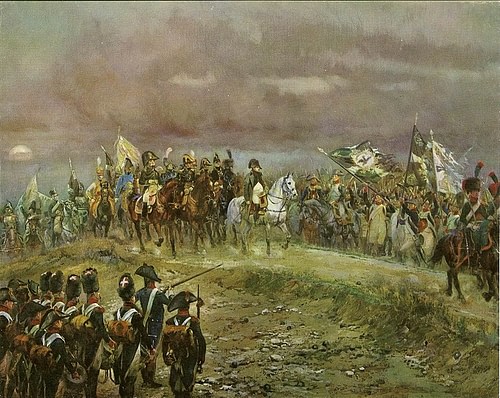
The double Battle of Jena-Auerstedt was a decisive French victory. At Jena, the casualties had been around 6,000 men for the French against 27,000 Prussian casualties; at Auerstedt, the III Corps had lost around 7,100 men against 15,000 for the Prussians. The defeat of the Prussian army was so complete that it ceased to pose much of a threat to the French advance. The Grande Armée mopped up the remaining Prussian resistance and captured Berlin on 25 October, with Davout's III Corps given the honor of being the first to enter the city. Saxony switched sides and joined Napoleon's Confederation of the Rhine, allowing Napoleon to focus solely on defeating the Russians. Though the War of the Fourth Coalition would continue until the Treaties of Tilsit of July 1807, the Battle of Jena-Auerstedt effectively removed Prussia from the war; Prussia would not seriously challenge Napoleon again until the War of the Sixth Coalition in 1813.

